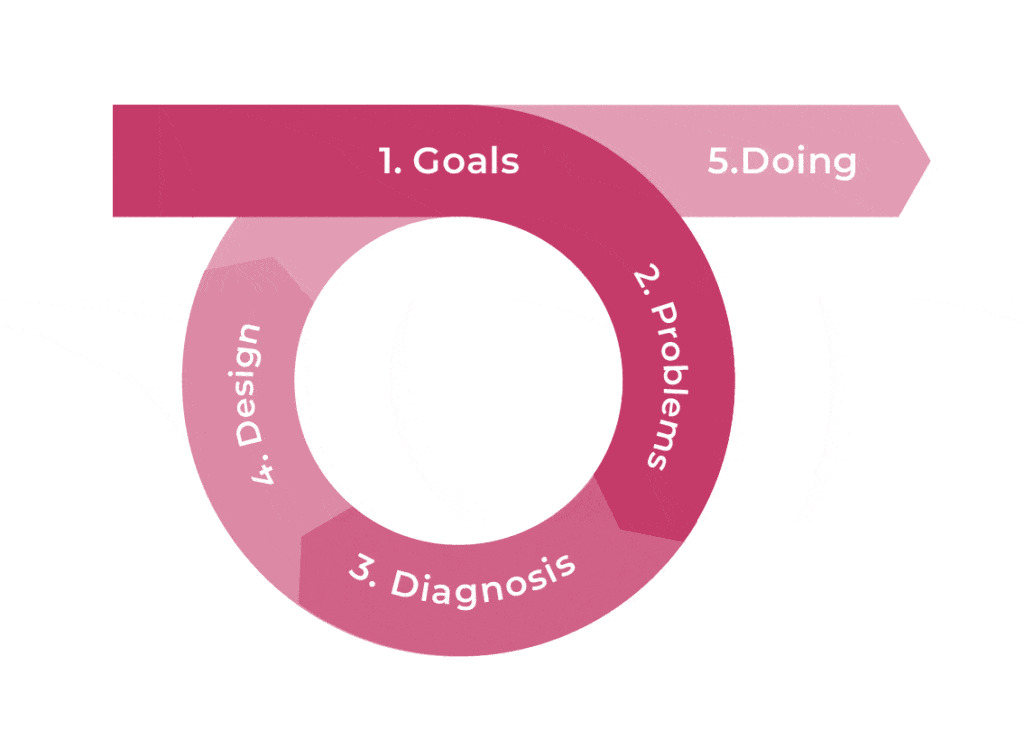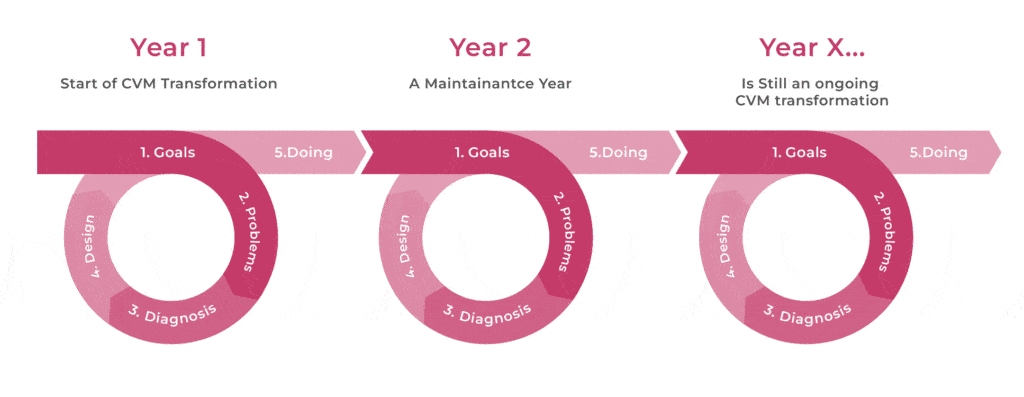Some CVM initiatives coming from strategic planning exercises will be very large in scope and may easily take 1 year, 3 years or even 5 years to complete. Launch of a new customer loyalty program, for example, will usually take at least a year to roll out and will start generating meaningful returns only in 3-5 years. A merger between two companies can take 3 to 5 years to merge the operations, cultures, and systems of the acquired company into a single entity, ensuring a seamless and cohesive blend of both organizations and/or brands.
Transformational CVM initiatives deal with a portfolio of projects that challenge current assumptions, create fundamental technological, commercial and organizational changes, introduce strategic shifts and adapt the organization to evolving customer needs. It operates in a fuzzy, uncertain landscape where clarity of purpose, constant feedback and learning is essential for eventual success. Because of the long-term nature of these activities it can be quite challenging to conceptualize them. The following diagram, showcasing Ray Dalio’s 5 Step Process, effectively illustrates the fundamental dynamics of the Transformational activities:

Ray Dalio’s 5-Steps Process: Work Principle
- Transformation begins with Goals that outline what the organization wants to achieve
- There is a set of Problems or Obstacles that prevent the organization from achieving the goals
- There is a Diagnosis that outlines what is missing or should be changed
- There is a Design of how the problem-free, obstacle-free situation looks like
- There is a Doing on a higher performance level
A key aspect of this framework is that transformation is not a one-shot process, but rather a series of “loops” that repeat on a periodic basis.

This cycle of 5 steps repeats periodically as the organization encounters new problems, devises new solutions and chases evolving goals.
The first key pitfall is therefore lack of a framework to conceptualize and manage the uncertain nature of this transformation. Use of a framework similar to the one presented above and aligning stakeholder expectations around the fact that there are going to be multiple iterations, interspaced by diagnosis and adjustment stages is a prerequisite for success.
A second key pitfall relates to the fact that many CVM transformations are aiming to change the way customers interact with the company and many times such programs face market failure and customer rejection. Customers are outside the organization and their motivations are hard to influence. Accordingly, CVM transformation initiatives can be conveniently grouped into two types, depending on whether they are primarily targeted towards the market and face market risk, or towards change inside the organization and do not face such risk.
|
Internally focusing CVM transformation: no market risk |
Externally focusing CVM transformation: market risk |
Both internal and external elements: market risk |
|---|---|---|
|
|
|
When CVM transformation is internally focusing, the key challenges relates to the cross-functional nature of CVM. Such transformations can be dealt using approaches discussed in traditional change management literature, which offers a variety of useful frameworks on initiating, doing, and supporting large-scale change activities. To ensure successful transformation you need to apply techniques across all 14 areas impacted by CVM:
-
General Management
-
Market Research
-
Customer Experience
-
Customer Acquisition
-
Inbound Channels (shops, call center, web, e-commerce, USSD)
-
Outbound Channels (email, tele-sales, field staff, sms, push notifications)
-
Pricing
-
Products
-
Branding
-
Technology
-
Data Analytics
-
Data Engineering
-
Compliance and Regulatory
-
Security
When CVM transformation is externally focusing, an additional set of challenges arises due to the fact that there are risks related to market acceptance or customer adoption – your idea may fail in the market and the entire transformation will fail in turn. These risks need to be eliminated before the new approach can be executed at scale. These risks are:
-
value risk – will the customer see sufficient value in what you are proposing and be willing to pay for it?
-
ui/ux risk – can the customer use the provided product/service effectively?
-
feasibility risk – can the business build a solution as envisaged?
-
business viability risk – can the business create, sell and maintain it at a price that allows ROI?
The elimination of these four risks makes up the Market / Product Discovery stage which needs to be borrowed from the discipline of product development and applied in CVM domain. This aspect is uniquely present in CVM transformation and rarely seen outside of it. The premature scaling of CVM ideas that later fail in the market is a common root cause of short careers among CVM transformation leaders.
CVMBoK © 2023 by Exacaster is licensed under CC BY-NC 4.0



